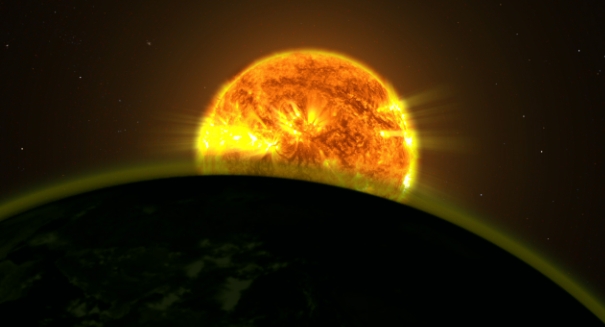
A new theory on how the solar system came to be.
Next time you think your little one has been terrorizing the house, just think it could be worse. You could have had to deal with our solar system when it was young. Scientists have recently found that the asteroids in in the solar system’s main asteroid belt offer evidence of how rough and rowdy the system really was.
Scientists had already studied around 2,000 of the biggest asteroids in the belt, which were the ones with roughly 62-mile diameters. What those asteroids showed was a neat structure in the belt and solar system. For example asteroids closer to the sun had warmer surface temperatures than those that orbited farther away.
These observations supported the theories that in the early stages of the solar system formation, those bodies that developed in warm environments would continue to orbit nearer the sun while the ones formed in cold environments remain farther away.
“We said, ‘Oh look, this has been preserving the conditions from the original formation. Case closed. It all makes sense,'” astronomer Francesca DeMeo, with the Harvard-Smithsonian Center for Astrophysics, told Discovery News.
So here’s where the solar system reveals it’s more complex that what scientists had previously believed. Scientists worked on a new analysis based on a staggering 100,000 asteroids of all sorts of sizes. The findings from this analysis tell a totally different story.
“Everything is mixed. Pieces are everywhere, like they’ve been just kind of thrown all over the asteroid belt,” said DeMeo, lead author of a study that appears in this week’s journal Nature.
“It’s certainly overturned a lot of traditional thinking,” added University of Arizona planetary scientist Dante Lauretta, lead researcher for an upcoming NASA asteroid sample return mission.
Scientists haven’t quite figured out why the smaller asteroids don’t fall into the neat order like their larger siblings, but they are theorizing that it might result from gravitational pushes from jostling planets back when the solar system was still young.
NASA’s OSIRIS-REx sample return mission is designed with the primary goal being to figure out just what happened with the asteroids. NASA has planned the launch for September 2016. The space craft will be taking samples from a cold asteroid named Bennu, and the samples are expected to return to Earth in 2023.
Scientists hope to compare the information they already have from telescopes to the actual physical and chemical processes that shaped them from those samples.

Leave a Reply